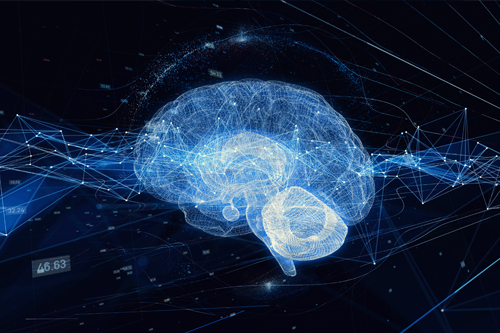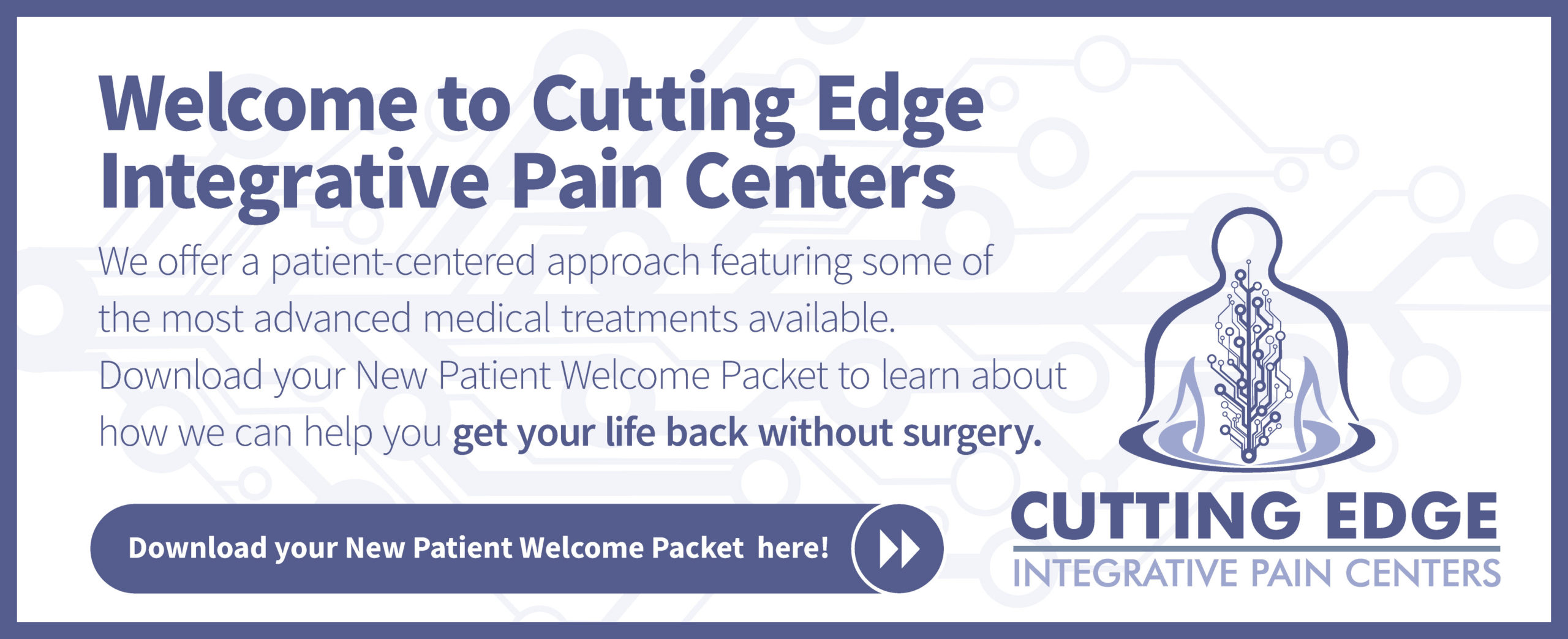Neuromodulation Therapy
Retrain Your Brain to Control Pain
A Powerful and Effective Approach to Pain Relief
Chronic pain affects more than 50 million Americans each year. One of the alternatives to prescription drugs for relieving chronic pain is the innovative field of neuromodulation therapies. These treatments are proven to be the most effective tools in treating chronic pain. They allow patients to avoid side effects common to prescription drug use, such as excessive sedation or clouding of the mind.
Neuromodulation therapies include several types of treatments including spinal cord stimulation, peripheral nerve stimulation, neurofeedback, heart rate variability training and more. Dr. Landrum specializes in this type of care and has successfully administered these treatments to numerous patients, who are now leading pain-free lives.
Neuromodulation/Spinal Cord Stimulation
Do you have burning or tingling in your arms and/or legs that is painful?
Have you had back surgery or joint replacement and still have pain?
Do you find light touch unbearable? (sheet, socks, shoes)
Do you have nerve pain and you have found Neurontin, Gabapentin, Cymbalta, and Lyrica to NOT be effective?
Have you been to a surgeon and been told you are not a candidate for back surgery?
Do you have headaches that have started from neck surgery or a car accident?
If you answered yes to any of these questions, it’s time to learn more about Neuromodulation and Spinal Cord Stimulation . These procedures are a simple, safe and minimally invasive treatment clinically proven for effective long-term relief for those suffering from back pain.
Frequently Asked Questions
What is Neuromodulation Therapy?
Neuromodulation is the alteration of nerve activity through a stimulus ( electrical or chemical) to specific sites in the body to help restore physical function or relieve pain symptoms. Non-invasive techniques that we use are: QEEG, Neurofeedback, Auditory Visual Entrainment, Heart rate variability training to affect the Brain’s control & effects on pain and function. Invasive techniques include: (traditional, high-frequency, dorsal root ganglion) spinal cord stimulation and peripheral stimulation ( Bioness Stimrouter ).
What is neurofeedback?
Neurofeedback is essentially training your brain to relax by rewarding you with positive feedback.
During a neurofeedback session, you wear a cap containing sensors that pick up your brainwaves. The brainwave information travels to a computer, where they display on the monitor.
Depending on the neurofeedback program that they use, you’ll see images such as a group of blocks, a movie, a calming outdoor scene, or someone surfing in the ocean. The model will change — either positively or negatively — to reflect your brain activity.
For example, the blocks move into a particular position, or the movie keeps playing — as long as you relax your brain. The blocks fall into disarray, or the movie stops when brain activity increases. The immediate feedback you receive teaches your mind to remain in a comfortable state.
How does neurofeedback improve pain and other symptoms?
As you consistently train your brain by changing the pattern of electrical activity, you modify and rewire neural activity in the areas of the brain targeted by Dr. Landrum. With ongoing neurofeedback training, the symptoms associated with those areas are relieved.
What conditions are treatable with neurofeedback?
Dr. Landrum takes a holistic approach to pain management and pain relief, considering all the factors that affect your pain. In many cases, complementary therapies like neurofeedback help reduce those issues.
The team at Cutting Edge Integrative Pain Centers use neurofeedback to treat depression, anxiety, insomnia, and headaches.
These problems caused by chronic pain can worsen your pain, creating a cycle that’s often hard to break. Neurofeedback can make a profound difference.
Which conditions are treatable with spinal cord stimulation?
Spinal cord stimulation treats chronic spinal pain. Your pain may be due to an acute injury or illness that becomes chronic, or your problem may develop gradually over the years from normal wear-and-tear, overuse, or degenerative changes.
These are some of the most common causes of spinal pain:
- Herniated disc
- Disc degeneration
- Slipped disc
- Osteoarthritis
- Pinched nerve
- Narrowed spinal canal
- Sprains and strains
You may also benefit from spinal cord stimulation if you continue to experience pain after spine surgery.
How does spinal cord stimulation relieve pain?
Spinal cord stimulation uses a device that alleviates your pain by masking pain signals usually sent by spinal nerves.
When the stimulator is activated, it sends a mild electric current to the specific nerves in your spine that are responsible for your pain. The electric current blocks the nerve signals, so they don’t reach your brain.
When nerve signals relaying pain don’t reach your brain, you stop feeling the pain even though its source still exists.
How is a spinal cord stimulator device implanted?
The spinal cord stimulator (SCS) device includes several components: a tiny pulse generator, a lead wire with eight to 32 electrodes that deliver the electrical pulses, and hand-held remote control used to adjust settings and turn the SCS device on and off.
If you’re a good candidate for SCS, you’ll first have a trial period in which the lead wires insert, and the electrodes are placed over the nerves responsible for your pain. But the generator during this phase is worn on your waist. The trial period gives you the opportunity to discover whether it works for you before having the generator surgically placed under your skin.
If you find that the procedure works for you, Dr. Landrum surgically implants the pulse generator under your skin.
Are you a good candidate for neuromodulation therapies?
Dr. Landrum evaluates your health and pain history to determine whether neromodulation therapies are an option for you. You may be a good candidate if you experience debilitating pain for at least three months and meet criteria such as:
- Conservative treatment fails to relieve your pain
- Major surgery isn’t a recommendation, or you don’t want it
- You don’t take medications that may prevent implantation surgery
- You had a successful SCS trial
When you suffer from chronic pain and would like relief from a team that specializes in personalized care, call Cutting Edge Integrative Pain Centers in Elkhart, Indiana, or book an appointment online.
About the Doctor
Orlando A. Landrum MD, MBA
Regenerative Medicine and Interventional Pain Specialist
Our Location
Elkhart, IN
3060 Windsor Court

